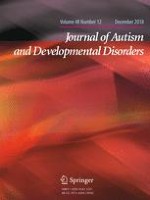03-07-2018 | Original Paper
Adult Siblings Who Have a Brother or Sister with Autism: Between-Family and Within-Family Variations in Sibling Relationships
Gepubliceerd in: Journal of Autism and Developmental Disorders | Uitgave 12/2018
Log in om toegang te krijgenAbstract
Prior research on the sibling relationship in the context of autism spectrum disorder (ASD) has included only one sibling per family. We used multi-level modeling to examine aspects of the sibling relationship in 207 adults who have a brother or sister with ASD from 125 families, investigating variability in sibling relationship quality and pessimism within and between families. We found that there was greater variability in aspects of the sibling relationship with the brother or sister with ASD within families than between families. Sibling individual-level factors were associated with positive affect in the sibling relationship, while family-level factors were associated with the sibling’s pessimism about their brother or sister’s future. The findings illustrate the unique experiences of siblings within families.
